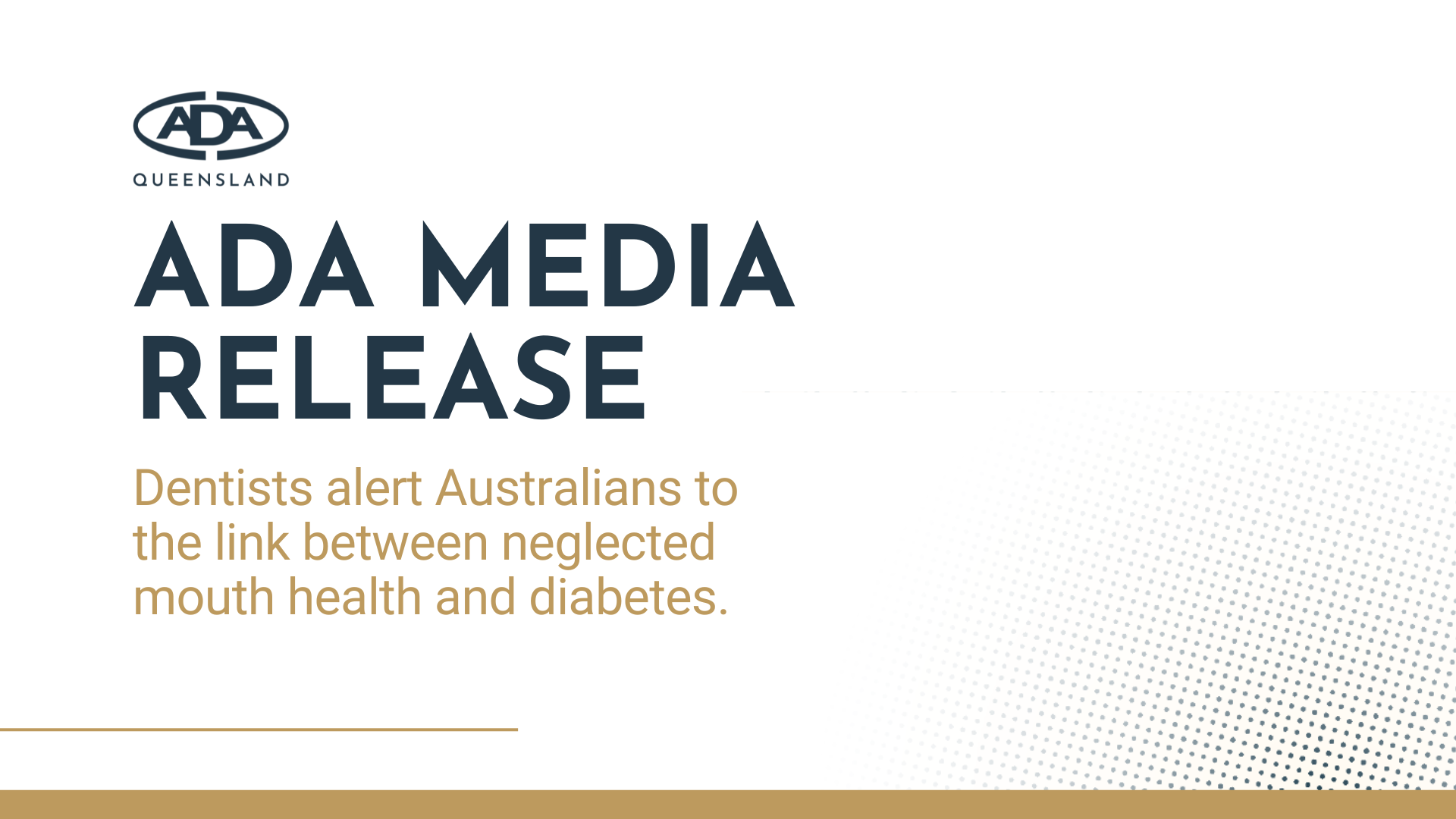Dentists alert Australians to the link between neglected mouth health and diabetes

DENTISTS ALERT AUSTRALIANS TO THE LINK BETWEEN NEGLECTED MOUTH HEALTH AND DIABETES
Failing to brush teeth twice a day and floss once a day can not only contribute to the onset of Type 2 Diabetes, it can also make an existing Diabetes condition worse, a fact very few Australians are aware of.
This is the key message in the Australian Dental Association’s (ADA) Submission to the Inquiry Into Diabetes by the Standing Committee on Health, Aged Care and Sport currently underway.
The ADA is urging the Federal Government to educate those at risk about better looking after their mouths, as well as seeking to ensure both healthcare professionals know about the link between oral and systemic disease - and mandating for clearer food and drink labelling.
The Submission comes hot on the heels of the ADA’s nationwide annual campaign highlighting the intrinsic link between poor oral health and serious knock-on effects on the rest of the body, including cardiovascular disease, Alzheimer’s, rheumatoid arthritis and low birthweight and preterm babies in addition to Diabetes.
“Type 2 Diabetes and oral health have a bidirectional or two way relationship,” ADA Vice President Dr Scott Davis said. “So people with diabetes have high blood sugar levels which can lead to gum disease which when left untreated is now known to be one of the top complications of Type 2.
“Gum disease in turn, makes it difficult to control blood sugar levels and when left untreated, results in periodontitis which addition to receding gums, means the bones supporting the teeth break down, and teeth can fall out, as well as contributing to these other serious long-term health issues.
“While the relationship between oral health and Diabetes can be different for people with Diabetes Types 1 and 2, it’s important for people with Diabetes to maintain good control of both their oral health and their diabetes management.
“The upshot of all this is that people with Diabetes should see their dentist for regular checkups and cleaning, especially those recently diagnosed or who have difficulty controlling their blood sugar levels.”
Oral manifestations of Type 2 Diabetes such as a higher risk of dental decay, dry mouth from reduced saliva production, oral thrush and changes to sense of taste, should be monitored as important indicators for the management of this disease.
A major contributory factor to the prevalence of Type 2 diabetes and tooth decay is our love of sugary drinks. Australia is one of the largest per capita consumers of sugary drinks in the world and is particularly high with young people and socio-economically disadvantaged households.
A single can of sugar-sweetened soft drink contains on average 10 teaspoons or 40g of free sugars – so one can is already way over the 24g a day recommended by the World Health Organization.
The ADA is urging the Federal Government to introduce a health levy on sugary drinks by increasing the price by 20% and fund research into the link between oral and systemic diseases like diabetes. It also wants to see health campaigns with an oral health component to ensure they reach people with Diabetes.
The dental body also wants to see an overhaul of the Health Star Rating System to enable consumers to make more informed choices when shopping, with clearer labelling as mandatory for food and drink manufacturers.
How the bi-directional relationship works
When blood sugar levels are high, the body produces more glucose. This glucose can build up in the saliva and plaque, which are sticky substances that coat the teeth. The bacteria in plaque feed on glucose, and as they multiply, they produce acids that can damage the gums and if not cleaned, can lead to gum disease.
Gum disease can make it more difficult to control blood sugar levels. When the gums are inflamed, they can't protect the body as well from bacteria. This can lead to an increased risk of infection, which can make it more difficult to control blood sugar levels.
Good oral hygiene, regular dental checkups, and timely dental treatment should be recognised as essential healthcare measures in the prevention, management, and control of Type 2 Diabetes.
Oral conditions associated with Type 2 Diabetes
1. Tooth decay is caused by plaque, a sticky film of bacteria that forms on the teeth. When plaque is not removed, it can produce acids that can eat away at tooth enamel.
2. Dry mouth (xerostomia) happens when the mouth produces less saliva than normal which can lead to tooth decay, gum disease, and difficulty swallowing. Saliva helps to keep the mouth moist and bacteria free.
3. Oral thrush is a fungal infection that can cause white patches to appear on the tongue, gums, or inside the cheeks, and is more common in people with diabetes.
4. People with diabetes have poor blood circulation, which can make it difficult for the body to fight infection and heal wounds such as cuts and wounds after dental treatment.
5. Dysgeusia is a condition that causes a change in the sense of taste, making food taste different or difficult to taste at all.
More News Stories